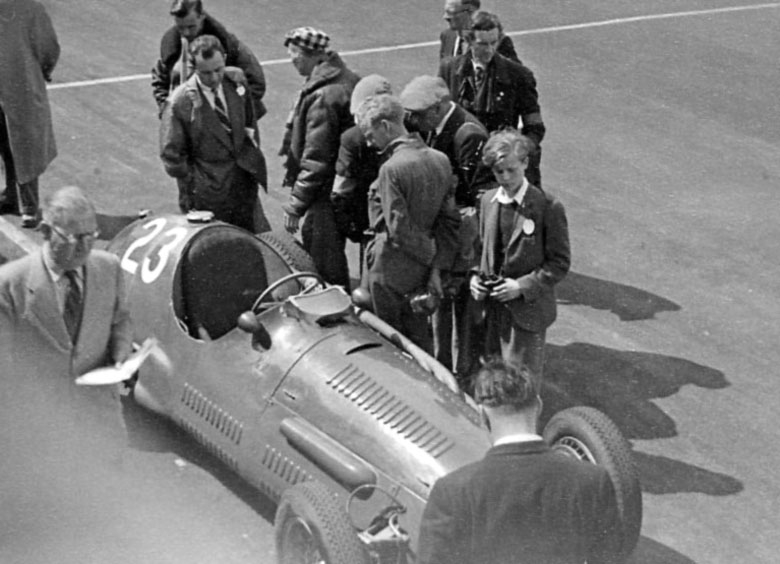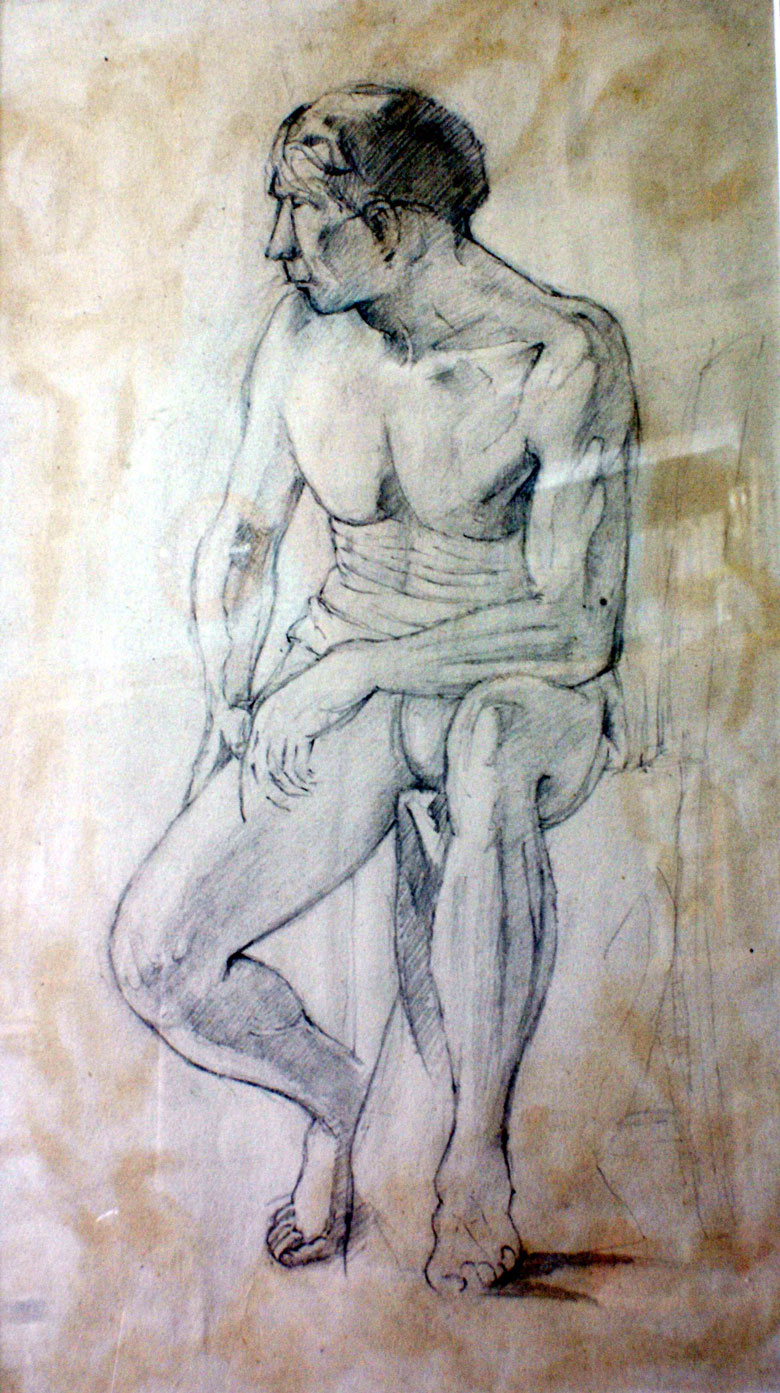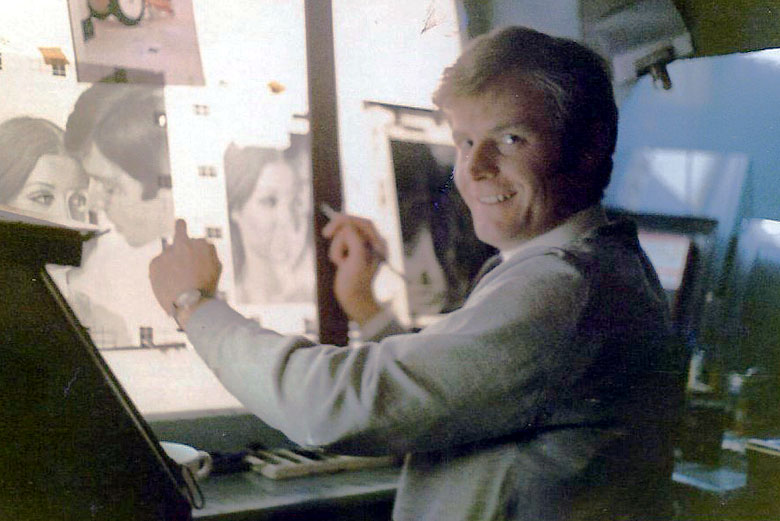By Rodney Diggens
Back in London, the war was over and my education had just begun in earnest. I started my art training at The Camberwell School of Arts and Crafts in South London aged just 13 in 1950. And it was all about drawing and yet more drawing. But then as now, it’s hard to earn a living as an artist. We looked at other possibilities.
Ancient Skills
There was a printing department at Camberwell alongside the usual arty section. Discussions with one of the tutors left two possibilities: Lithography or Photogravure. We spun a coin, heads Litho. tails Gravure; I won Gravure! The difference between Gravure (intaglio) and Litho is where a plate or cylinder is etched, or stippled to create cavities that contain the ink; letterpress is where the ink is applied to the surface.* I was accepted by a small Photogravure printer in South London, L T A Robinsons Ltd. A five year apprenticeship followed (annoyingly interrupted by two years National Service).
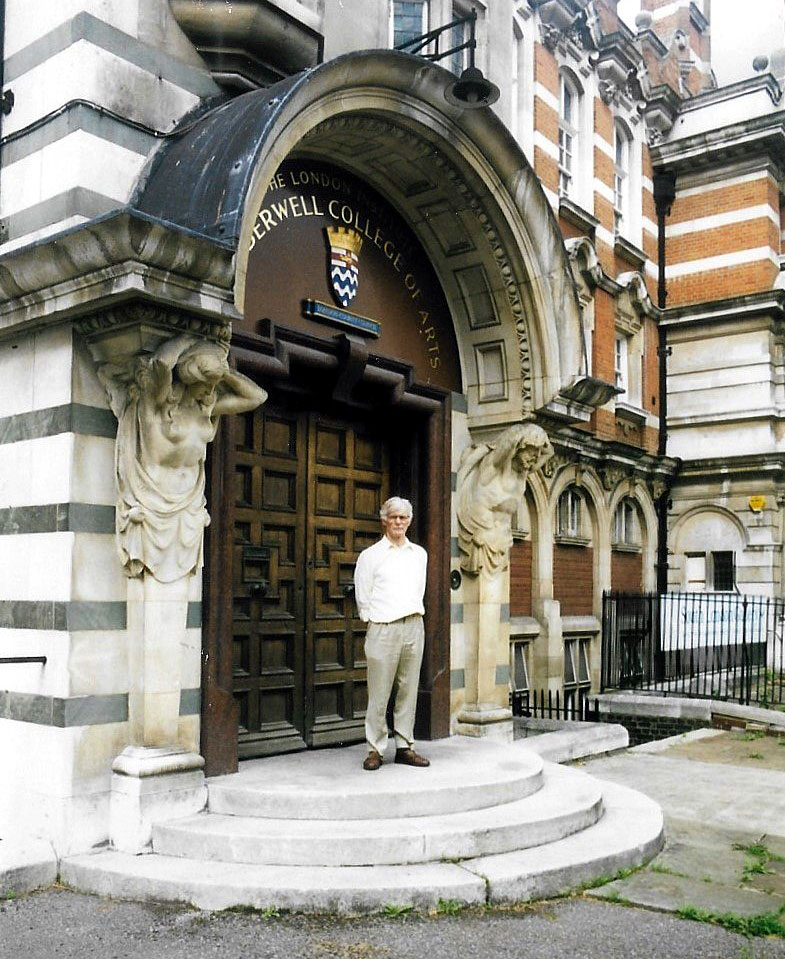
Here I am, standing on the steps of Camberwell Collage of Art in 2004. It used to be ‘The Camberwell School of Arts and Crafts’ when I was attending.
What impressed me most of all were the incredible skills that I was introduced too. Retouching, engraving, etching and an amazing photographic studio. Enormous plate cameras on rails fed with film the size of A1 sheets! Learning about the history of Photogravure, developed by those early pioneers Henry Fox Talbot and the Frenchman Joseph Nicéphore Niépce, was fascinating. At the London Collage of Printing in Back Hill off the Clerkenwell Rd. we had the opportunity to practice those early techniques printing onto copper plates via etching, drypoint, aquatint or mezzotint. These skills were amusingly called ‘Handraulic’ by the threatened craftsmen as the new electronic devices began invading the industry. The arrival of Helio Klischograph ** sounded the death knell, at a stroke, of those hard-earned skills; this amazing device could, via a scanning head tracing the image to an engraving head cutting into the metal plate, eliminate at a stroke, those talented craftspeople. A few remained just in case the blooming gadget misbehaved.
An Artist After All
At that point, I did become an artist and illustrator after all, time to put those years spent at Camberwell to good use. The sort of people who inspired me were of a bygone age, the American illustrators for example, especially Norman Rockwell. Artists such as Frederic Remington, Howard Terpning and Keith Ferris, Terence Cuneo, Frank Wootton and the wonderful Gordon Crosby. Mustn’t forget Peter Helck.
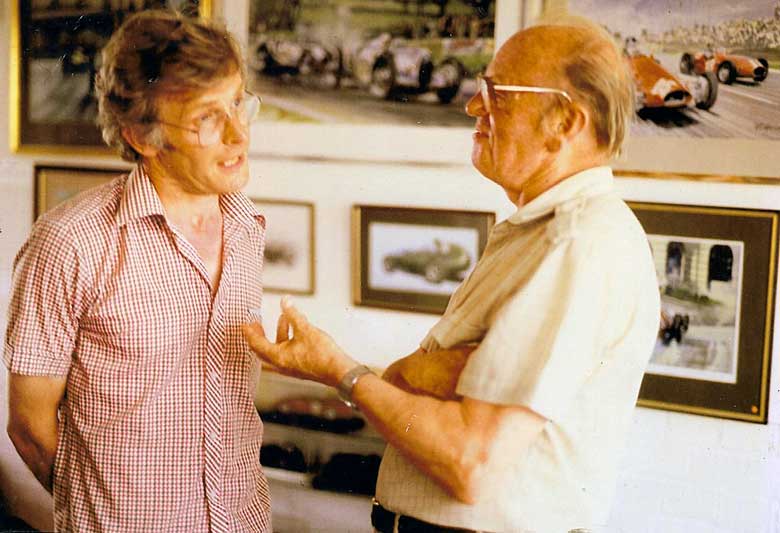
I also met many contemporary artists. Here, German artist Walter Gotschke and I are seen in animated conversation at an exhibition held at a British Grand Prix meeting at Silverstone in 1983, a great privilege indeed.
And in that capacity, I’ve worked for a number of major companies including British Aerospace (BAE Systems) Aston Martin Lagonda, Pace Petroleum, numerous insurance companies and a number of magazines, both aviation and motoring.
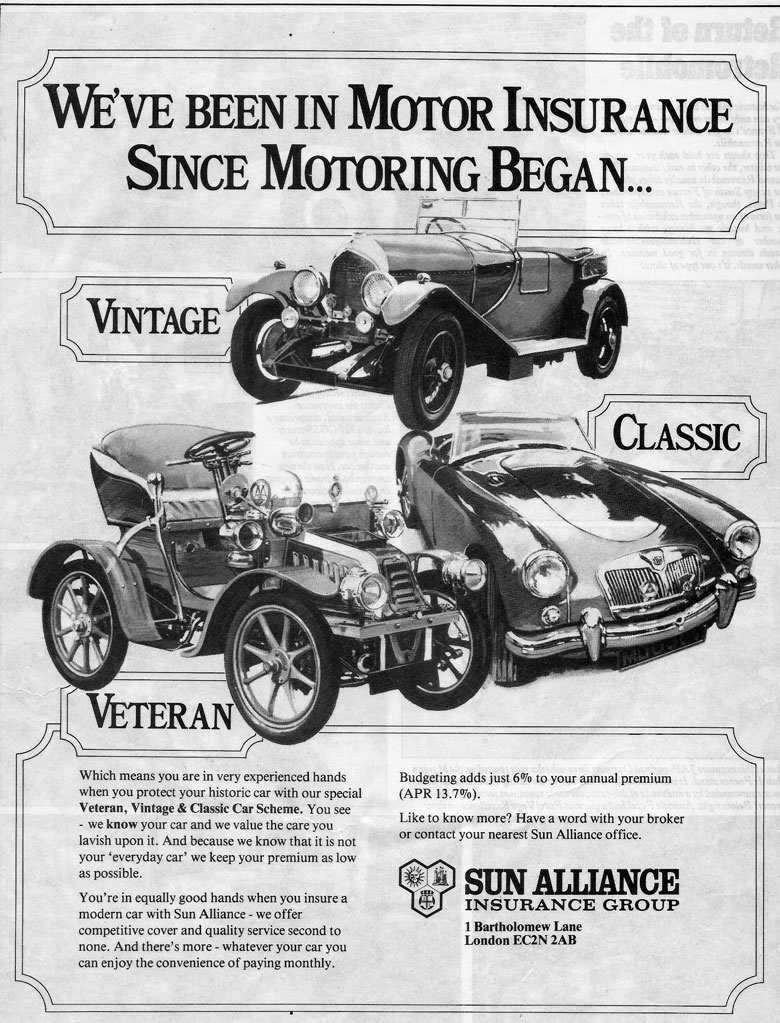
You may recall this ad for an insurance company and published in the April 1982 issue of Classic and Sportscar magazine.
Missile Art
I did at one stage sign the National Secrets Act. I remember sitting in a small room adjacent to the main office, paints, brushes and drawing pad to hand.

Quite challenge to illustrate a missile’s flight from launch through flight to target, often loitering enroute (by deploying a parachute for example) when the tracking signal paused transmission.
A member of staff would appear with details of what had been discussed and I had to represent, to the best of my ability and with that person’s help, what that missile or whatever might look like in reality!
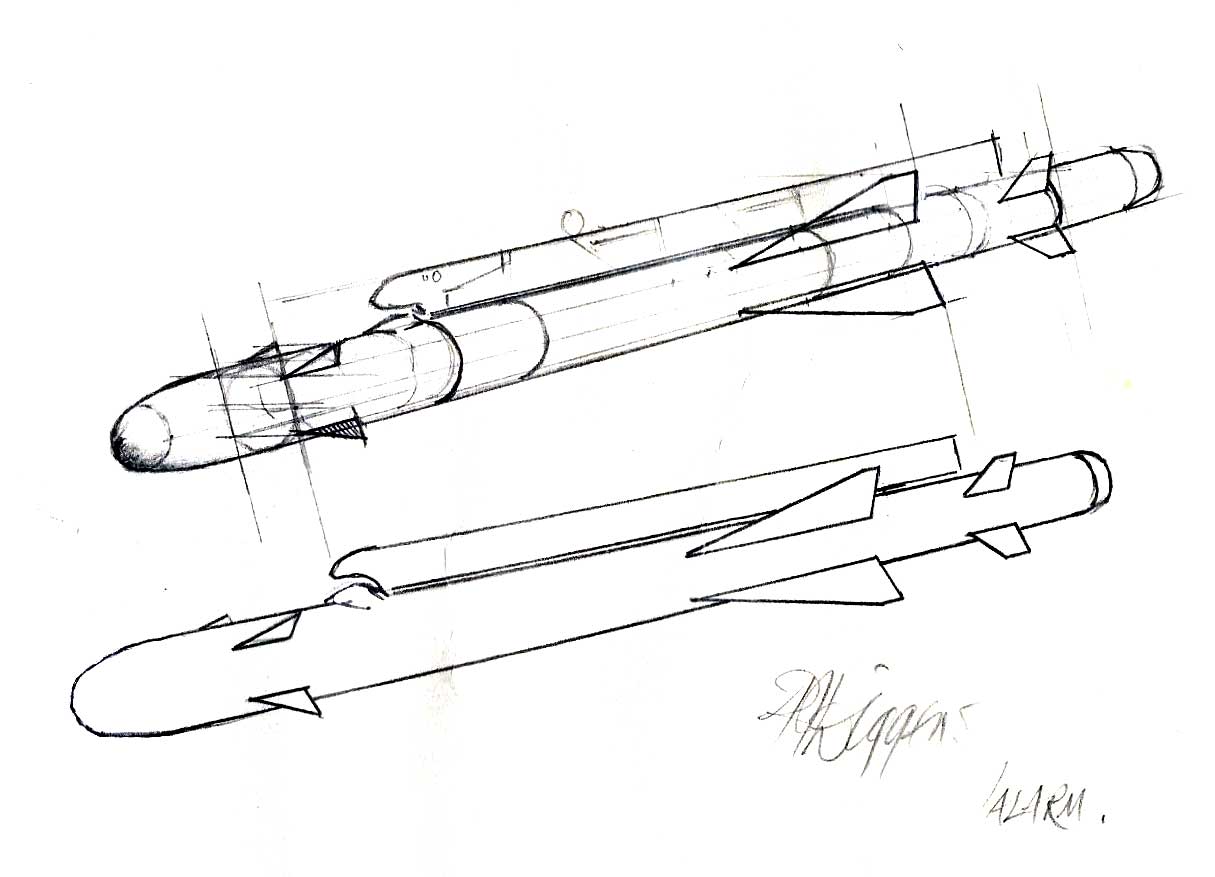
Need caption? One of the main concerns was to design weapons with low profiles(anti radar signals). This was a sketch for the ALARM ( Air Launched Anti Radar Missile).
BAE Systems became Matra BAe Dynamics in 1996 and things changed under new management and I was no longer so involved. Quite exciting while it lasted, there was discussion at one stage about installing a safe in our home!! Much of what was used was often classified and I never did see much of the final result as a published item. BAe had their own publicity department, with whom I worked closely, and a great team they were too.
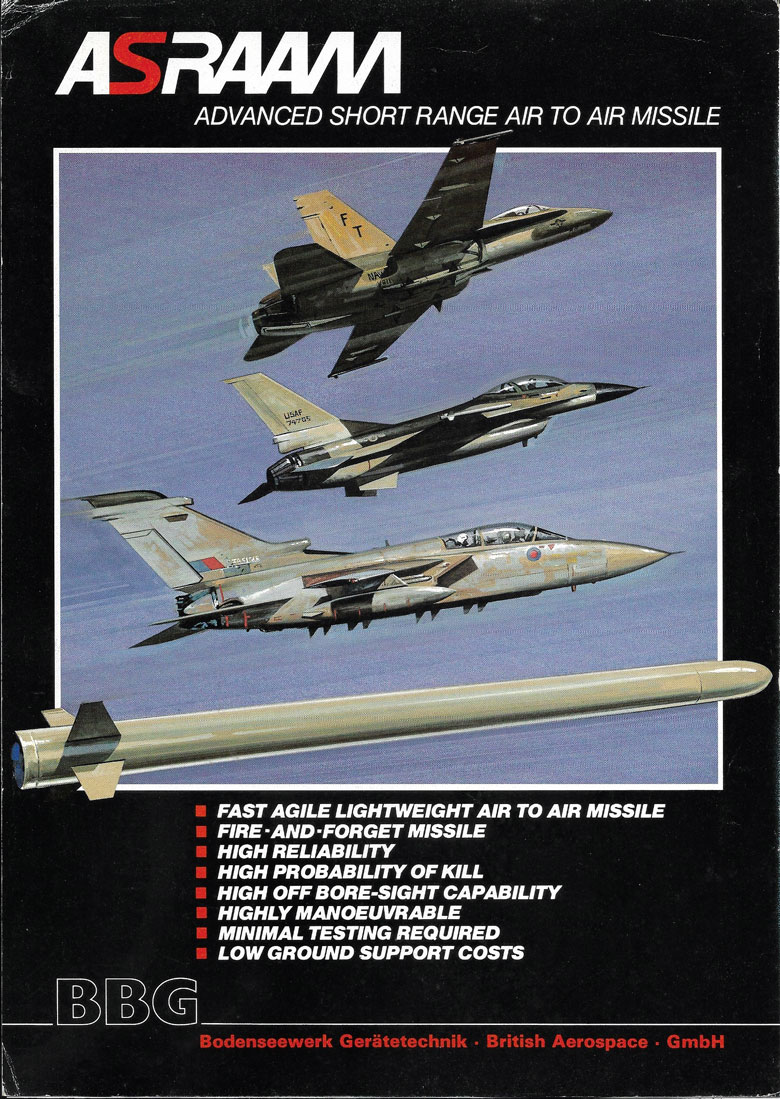
Platforms varied depending from where the missile was fired, Land Sea or Air. This ASRAAM illustration shows a Panavia Tornado, General Dynamics F-16 and McDonnell Douglas/Northrop F-18 Hornet.
Due Rewards
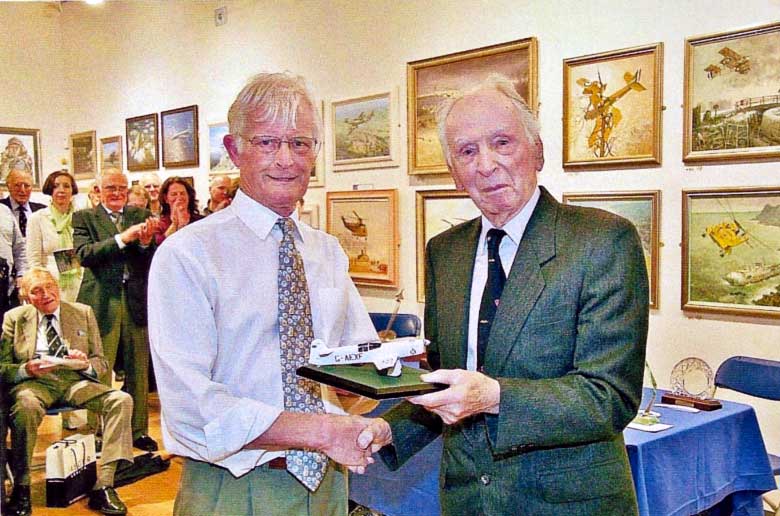
Taken at the Guild of Aviation Artists exhibition at the Mall galleries in 2012 shows the remarkable Eric ‘Winkle’ Brown, presenting me with the Alex Henshaw Award (Best painting depicting ‘Civil Light Aviation in the 20s and 30s.’) Eric Brown was known as the greatest test pilot who ever lived. It was a very great honour to receive this award from a truly great airman!
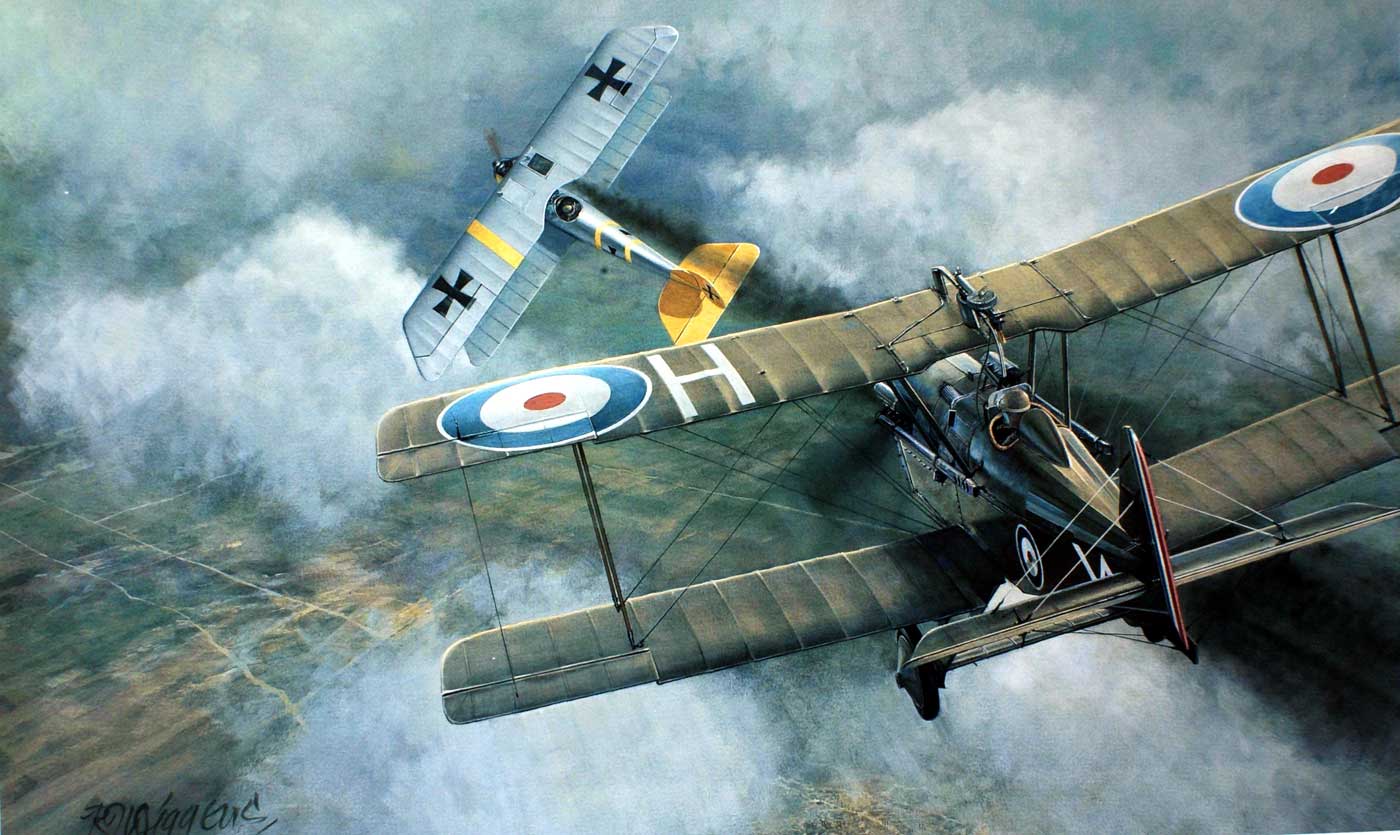
The Most Noble of Causes’, this painting won the Cross and Cockade International First World War Aviation award at the 2017 GAvA annual exhibition at the Mall Galleries. I also won ‘The Hawker Siddeley Trophy’ (Best Work in Gouache) twice, once in 2009 for ‘Costal Canadians’ Bristol Beaufighter MkX, and 2010 ‘Sea-lane Sentinel’ depicting the Short Sunderland Mk1.
Next week: The Artist goes Racing
* Intaglio includes line engraving and photogravure; the ink lies in recessed portions of the printing plate. The designs of stamps printed by intaglio are generally very sharp and crisp. The recesses are cut into the substance of the metal die, line by line and dot by dot, in line engraving. Photogravure, on the other hand, uses a process of photography and etching to create the recessed design on the die. Ink is applied to the engraved plate, then the plate is wiped clean, leaving ink only in the recessed areas. Next, paper is pressed against the plate under great pressure, forcing the paper into the recessed areas and transferring the ink to the paper.
Originally, this was done on a flat-bed press. Later, printing plates were curved and wrapped around cylinders on a rotary press so that printing could be done on a continuous web of paper rather than individual sheets.
The most commonly known method of planographic printing is lithography.
This type of printing is based on the principle that oil and water do not mix. Ink used to print stamps is oil based.
The printing surface is treated to hold water in the areas that are not to be inked. When the ink is applied to the plate, the areas with the water repel the greasy ink.
In offset lithography, the printing base prints an impression on a rubber-covered cylinder that rolls over the surface of the paper, to which the ink is transferred.
Another form of lithography is photolithography, in which the design is transferred directly to the printing surface through a photo-mechanical process.
**The Klischograph scans a picture line by line, and the resulting scan signal is used to control a steel stylus, which engraves more or less deep cuts into the surface of a printing plate, depending on the grey tone value of the pixel being scanned. The material of the printing plate can be either plastic or metal. This results in a screened printing plate for letterpress printing or for gravure printing.
